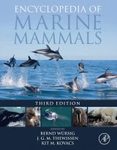About this book
Marine Mammal Observer and Passive Acoustic Monitoring Handbook is the ultimate instruction manual for mitigation measures to minimise man-made acoustical and physical disturbances to marine mammals from industrial and defence activities.
Based on more than two decades of offshore experience, and a decade of supplying MMO and PAM services (commercial and scientific), the Handbook is a long-overdue reference guide that seeks to improve standards worldwide for marine operations such as seismic and drilling exploration, wind farm piling, civil engineering, dredging, rock-dumping, and hydrographical surveys. By popular request, this manual will also form an accompaniment to MMO and PAM courses.
The Handbook consolidates all aspects of this discipline into one easily accessible resource, to educate all stakeholders (e.g. MMOs, PAM operators, suppliers, recruitment agencies, clients, contractors, regulators, NGOs, consultants, scientists, academia and media), regardless of experience.
Topics include worldwide legislation, compliance, anthropogenic noise sources and potential effects, training, offshore life, visual and acoustic monitoring (theory and practice), marine mammal distribution, hearing and vocalisations, and report writing.
Advice is provided on implementing sensible and practical mitigation techniques, appropriate technologies, data collection, client and regulator liaison, and project kick-off meetings.
A foreword is provided by Dr Phillip J. Clapham (NOAA and IWC).
Contents
About the Authors
Foreword
Acknowledgements
List of Acronyms, Units, Prefixes and Symbols
Preface
Chapter 1 Introduction
Chapter 2 Mitigation Measures
Chapter 3 Sources of Anthropogenic Noise
Chapter 4 Training
Chapter 5 Offshore Life
Chapter 6 MMO Theory and Practice
Chapter 7 PAM Theory
Chapter 8 Marine Mammal Vocalisations
Chapter 9 PAM Practice
Chapter 10 Report Writing
Glossary of Terms
References
Index
Customer Reviews
Biography
Dr. Victoria Todd is a founding Managing Director and Marine Science Consultant at Ocean Science Consulting (OSC), and is a Visiting Scientist at Institute of Sound and Vibration Research (ISVR, Southampton University, UK).
Ian Todd is a founding Managing Director and Marine Science Consultant at OSC, and is undertaking part-time postgraduate research in harbour porpoise (and other marine mammal) interactions with offshore installations and the environment at ISVR (PhD, Southampton University, UK).
Jane Gardiner is a Research Assistant at OSC. She holds a masters degree in Applied Marine Science from the University of Plymouth, UK.
Erica Morrin is a Marine Science Consultant at OSC. She holds a masters degree in Marine Mammal Science from the University of St Andrews, UK.





























![Mexico Field Guides: Baja California - Sea of Cortez - Pacific Coast: Marine Mammals [English / Spanish]](http://mediacdn.nhbs.com/jackets/jackets_resizer_medium/13/139516.jpg?height=150&width=96)





















